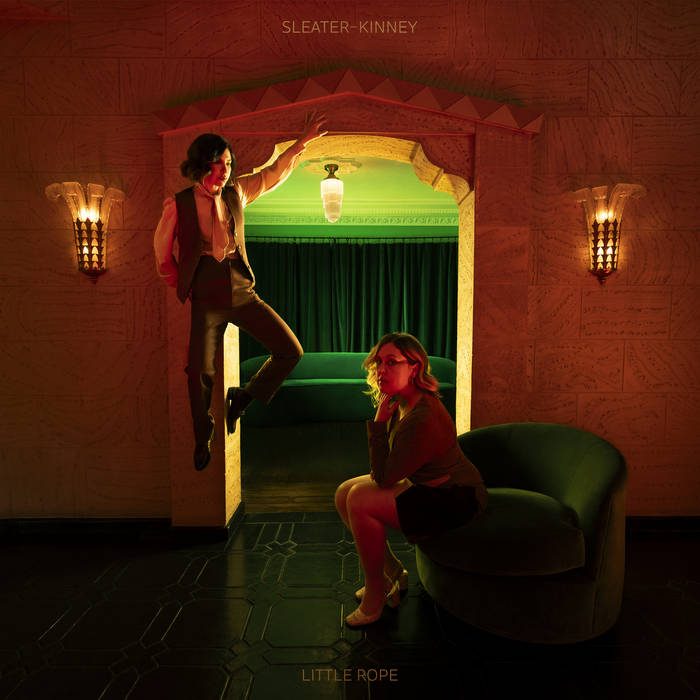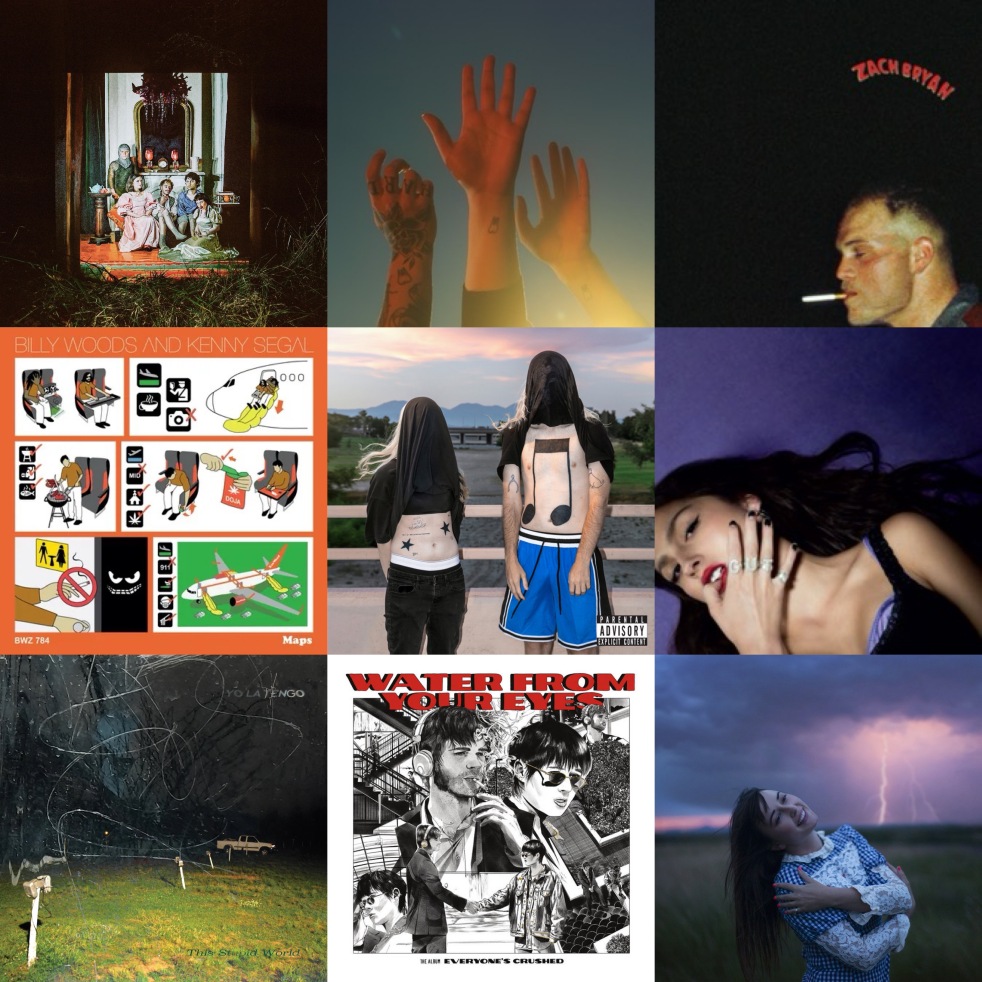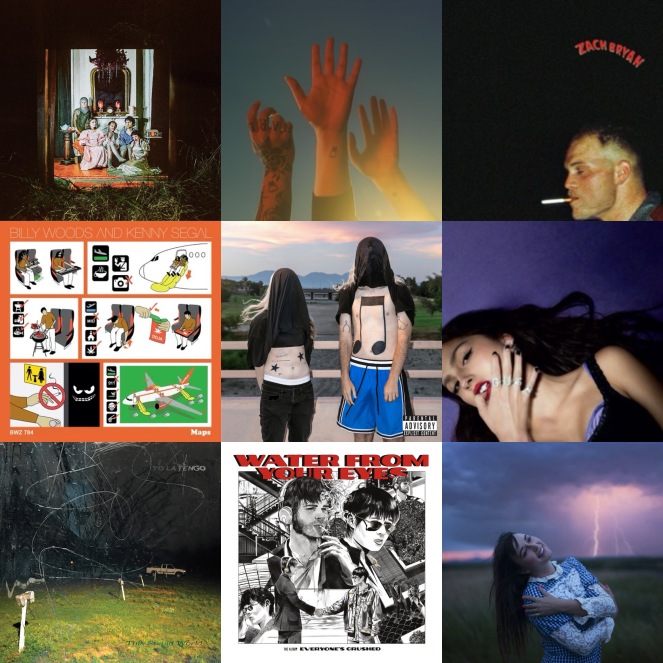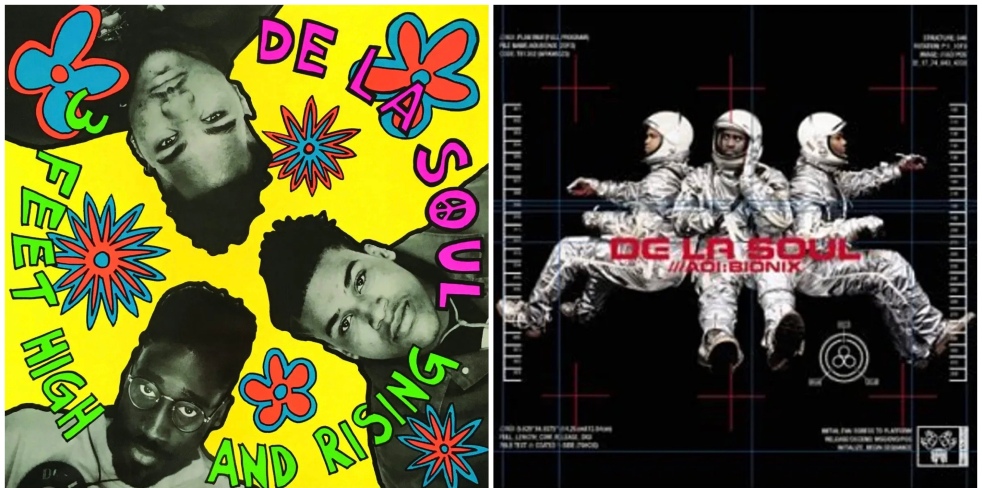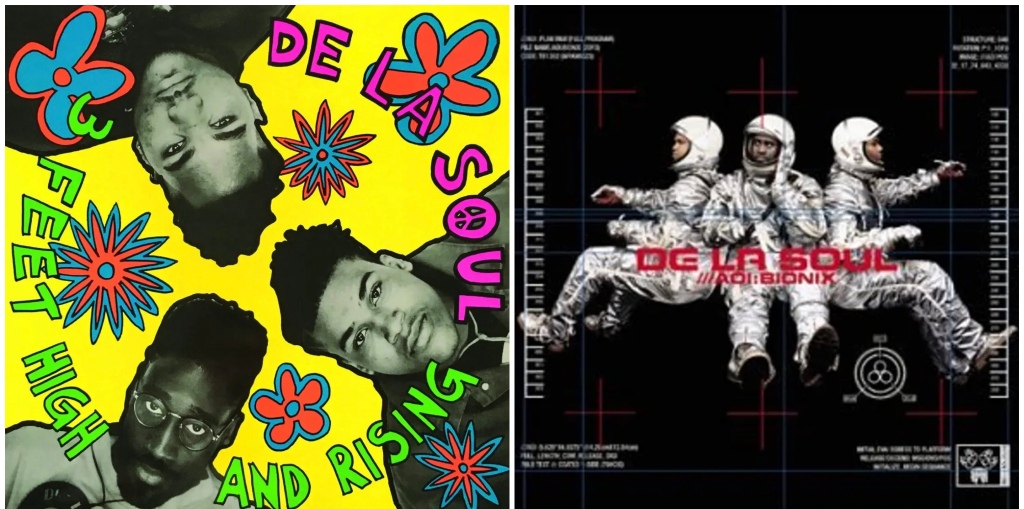Listening Log (January, 2024): Cyndi Lauper in a trash can, Sleater-Kinney forever, the Memphis blues everywhere
Here’s a stab at a kind of monthly listening diary, notes on music I sought out or encountered the previous month.
Cyndi Lauper in a trash can
A social media feed can be its own kind of stream-of-consciousness.
A couple of weeks ago, wasting time on the Artist Formerly Known as Twitter took the form of unintentional doom-scrolling. Great stock market! Great unemployment numbers! Inflation under control! And yet the ongoing media cataclysm suddenly picked up new velocity. Broadly good economic news was parried on my timeline with new assaults on what somehow became my life’s work: Journalistic writing.
Sports Illustrated. Pitchfork. The Los Angeles Times. All being torn up and picked apart like other publications before them and more to come.
Somehow amid this I encountered a random post about the under-rated 1980 Prince album Dirty Mind, which got me thinking about Cyndi Lauper, who covered that album’s greatest song, “When You Were Mine,” on her lone great album, 1983’s She’s So Unusual.
And that pulled me into a YouTube wormhole that brought up the video for one of the other great covers on Lauper’s album, her version of the Atlanta new wave band the Brains’ “Money Changes Everything.”
The song is from two generation’s back at this point, literally old news. And the power of Lauper’s version is old news to many. (Eternal hat-tip to critic Greil Marcus, in particular, on this subject.)
The song, as written, isn’t about the forces of capitalism rolling over art and news but rolling right over love itself.
It’s a great song. Lauper makes it a great record, more than just a nervy idea, and her version excises the sense, in the original, that male romantic grievance undermines the larger meaning.
Lauper inhabits the song with shock and desperation and a kind of awful acceptance, somehow all at once in the catch of her voice. She puts blood into it, and then spills it all in the street. Listening to her sing it is like witnessing a murder. Our own.
That’s all old news to me. But while I’d definitely seen this video, the song’s official one in an age where videos were ubiquitous, I don’t think I’d ever really watched it.
On tour, apparently here in Houston, the performance climaxes with Lauper folding herself into a trash can, where the forces she implicates would be only too happy to put us all, and riding it above the crowd. She has the microphone in her right hand. Her left is holding one of the wires that’s keeping the can aloft, and it looks very precarious, like if she lets go she will tumble right out. But as Lauper shakes and shouts the title phrase, she can’t help herself, finally letting go for a couple of seconds to pound her fist in the air.
This is not an acceptance of the naked fact being sung. Translation, with a nod to “A Visit From the Good Squad” author Jennifer Egan: “FIGHT! FIGHT! FIGHT!”
It could have been recorded tomorrow.
Sleater-Kinney forever
How many singers are, all at once, as powerful, expressive and idiosyncratic as Lauper in the mid-Eighties?
One answer is definitely Sleater-Kinney’s Corin Tucker in the late-Nineties. Or now.
I tend to not hear much new music in January, a time of shutting down after the year-end listening and list-making of the previous month.
But then here comes a new Sleater-Kinney record.
I miss drummer Janet Weiss, sure. Her addition on 1997’s Dig Me Out made this band’s music motorvate like little before or since. But Sleater-Kinney was (Carrie) Brownstein-Tucker before Weiss and remains Brownstein-Tucker now four studio albums into the band’s second life.
Even without Weiss, the new Little Rope seems to be the most rocking S-K record since the with-Weiss 2015 comeback No Cities to Love.
Tucker remains an earthquake of a singer. You feel the tremors and then earth starts breaking apart, perhaps most of all here on the vocal-showcase bookends “Hell” and “Untidy Creatures.”
Their guitar interplay has an oceanic quality, Brownstein’s fleet runs like waves lapping and sometimes vaulting over the top, with Tucker providing a churning undertow.
This musical relationship (with the addition of Brownstein’s more human-scale vocal counterpoint) is a physical fact, even when you’re struggling to fully connect with the songs as songs, as I still am a half-a-dozen listens in.
Speaking of YouTube wormholes, this sent me on another one. If I could choose only one band from one moment of my lifetime, the answer is definitely Sleater-Kinney, spring of 1997, when I saw them on (I think) a late Sunday afternoon/early evening at Minneapolis’ 7th Street Entry, still the best concert I’ve ever witnessed.
Here’s a full (?) set from New York’s CBGB from around the same time, and if the video/audio quality isn’t top notch, it all comes through anyway.
The early run of “I Wanna Be Your Joey Ramone” (Weiss driving a song whose studio version pre-dates her) into “Turn it On” into “All the Drama You’ve Been Craving.” Whew.
At the 15:58 mark, between songs, Brownstein asks the crowd, “Does anybody know the Sonics score right now?” A decade-plus later, I somehow found myself interacting on social media with big Blazers fan Weiss. My people.
I don’t think she gets an answer. I looked it up. The Seattle Supersonics, who had lost to the Chicago Bulls in six games in the prior summer’s NBA Finals, beat the Houston Rockets in a second-round playoff game that night, holding off elimination. They got bounced in the next game. Sorry, Carrie.
After that, Tucker asks those in front of the stage to put their cameras down. This is pre-cell phones.
“Put your security blankets, your shields down, because we’re not wearing any,” she says.
Then they play “One More Hour,” the most intense song they’ve ever written. Or maybe that’s “Good Things,” which comes toward the end. Another pre-Weiss song. She pushes it heaven-ward this time.
Welcome back, and the new Sleater-Kinney leads a good month for rock-oriented women singer/songwriter/guitarists I admire, with fine new singles from Waxahatchee, (Big Thief’s) Adrianne Lenker and Hurray for the Riff Raff.
Memphis blues everywhere
The music I actually spent the most time with in January was Memphis blues from the late 1920s and early 1930s, richly collected as part of The Memphis Blues Box, a 20-disc (!) collection from Bear Family Records that showed up in my mailbox in December, unsolicited and unannounced.
The set runs up to 1969, and I wrote about it all, including an interview with compiler Martin Hawkins, in The Daily Memphian, where I included my own selected 40-song Spotify sampler.
In order to convey the breadth of the set, I included at least one song from each of the 20 discs on the playlist, but what I’m most drawn to are the pre-WWII stuff, the street jug bands and two-guitar duos, the vaudeville-schooled bands and rich array of female singers.
If Sleater-Kinney is the best rock band of my lifetime, then the Memphis Jug Band is arguably the first great band in American pop music, a key precursor to rock and roll and rhythm and blues.
But in honor of Lauper and Tucker, a closing salute to some of the female singers of this Memphis era, such as Memphis Minnie, Minnie Wallace (different person), Sadie James, Jennie Pope and especially Hattie Hart:

